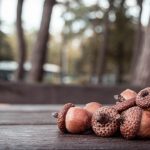
Scientific analysis of the health benefits of digestive pills made from black nightshade
Tuesday, February 13, 2018 by Ralph Flores
http://www.realsciencenews.com/2018-02-13-scientific-analysis-of-the-health-benefits-of-digestive-pills-made-from-black-nightshade.html

Research that was recently published in the IOSR Journal of Environmental Science, Toxicology and Food Technology (IOSR-JESTFT) studied the production of a digestive pill that contains Solanum nigrum — commonly known as the black nightshade — as its primary ingredient.
The paper, authored by Bimal Bibhuti from the Sam Higginbottom Institute of Agriculture, Technology, and Sciences (SHUATS) in India, noted that the pill was an adequate source of nutrients (such as protein, fat, crude fiber, carbohydrates, and calories) that fall within the recommended daily intake. The author used various ingredients with S. nigrum in the study to evaluate its therapeutic and pharmacological potentials, as well as its how it can better be absorbed by the body.
Black nightshades are plants that are endemic to Eurasia but can now be found in other areas such as the Americas, Australia, and South Africa. The plants are considered as weeds by horticulturists, and some parts are toxic when ingested. However, cooking the leaves and the ripe fruits of edible strains make it edible — some cultures use black nightshades as a food source.
Due to the close resemblance of their common names, S. nigrum (black nightshades) is normally confused for a far more toxic plant, the Atropa belladonna, called the deadly nightshade.
The plants have long been used as a therapeutic agent. In European traditional medicine, black nightshades have been used to induce sweating, relieve pain, and promote sleep with its powerful narcotic properties. Over in India, the plants are used to treat problems in the stomach, dysentery, and fever. The juices from black nightshades are used to treat ulcers and skin diseases, and the fruits are used to stimulate appetite and promote bowel movement. Studies have also indicated that it might possess anti-cancer properties, with an S. nigrum extract inhibiting the development of cervical carcinoma. (Related: Use herbal and homeopathic treatments for tonsillitis.)
In particular, the study banks on these digestive benefits of the black nightshade. Therefore, the author created a digestive pill that uses S. nigrum (locally known as Makoi) with other ingredients like Hing (also known as asafoetida), Piper longum (Indian long pepper), Piper cubeba (tailed pepper), ajwain (Ajowan caraway), jeera (cumin), black salt, and imli paste (tamarind paste). Five samples were created for the treatment, each with differing formulations. After the materials and the formulation were selected, the pills were created. All ingredients were ground into powdered form; after which they were measured and prepared, then mixed according to the specification of the formula. The tamarind paste was added to the mixture, and the resulting mash was combined so that all ingredients were mixed correctly. This was then poured into the dye to form the pills and was left to dry at room temperature.
To test the sensory quality of the pills, a nine-point hedonic scale was used to measure which sample was better preferred by the evaluators. Of the five samples, the panel preferred the formulation that contained 20 percent Makoi. The preferred sample was then evaluated for its physicochemical properties. The findings revealed that the capsule contained 17.89 percent moisture, 0.84 percent protein, 1.97 percent fat, 2.6 percent total ash, 1.60 percent crude fiber, 76.7 percent carbohydrate, and 327.09 kilocalories.
The study concluded that the digestive pills made from S. nigrum contained nutrients that are within the recommended daily intake. The author wrote in the report that while further studies are needed to which diseases could be targetted by the pill, “Therapeutic properties needs to be investigated in well-designed studies and further research is in process to find more uses of Solanum nigrum.”
Learn even more benefits that black nightshade possesses by going to Herbs.news today.
Sources include:
Tagged Under: Tags: black nightshade, botanical medicine, dietary supplements, digestion, goodhealth, goodmedicine, goodscience, Herbs, natural medicine, remedies, Solanum nigrum, toxicology





